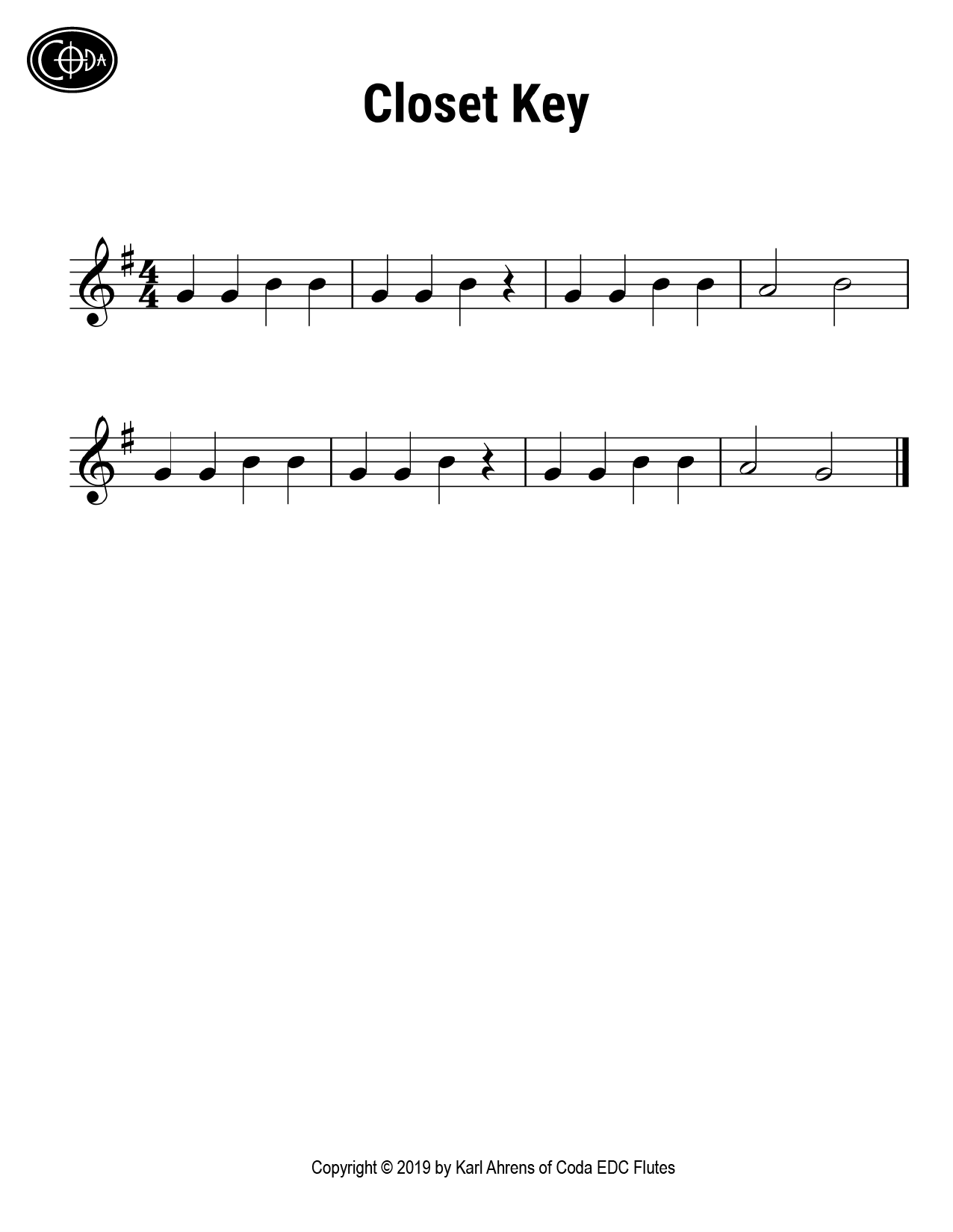You’ll notice that there are no fingering diagrams for the rest of the songs in Unit 2. This is to force you to recall the correct fingerings for each note. (You’ll thank me for this someday.🙂) Fingering diagrams are a good learning tool, but they shouldn’t become a permanent crutch.
Before you listen to Closet Key, here are a couple of activities that can help reinforce your music reading skills. Again, try these exercises without listening to the audio first.
- Chant the song as a Rhythm Practice exercise. Read the music notation and chant the rhythm of the song out loud, chanting only the G note.
Note: I am using the word chant to describe the act of singing a song in only one musical pitch, such as G, instead of moving your voice up and down the musical scale. (To know what a G sounds like, play a G note on Coda.) - Practice the song silently. Read the music notation and play all the notes on Coda, but don’t blow into the mouthpiece. Instead, just chant the rhythms in your head (or out loud) as you place your fingers in the correct positions to play each note.
Both the exercises above are good at isolating skills that make you better at reading music. And you can practice like this anytime, such as on a crowded airplane. Try them with Closet Key if you haven’t already.
Repeat each of the following steps a number of times:
- Listen to the Closet Key audio while you read the music notation.
- Listen, read, tap your foot, and sing along.
- Guided only by the music notation (without the audio), play the song on Coda — very slowly at first!
- When you’re ready, play Coda along with the audio.
Next, go on to Rain is Falling Down.
Closet Key





